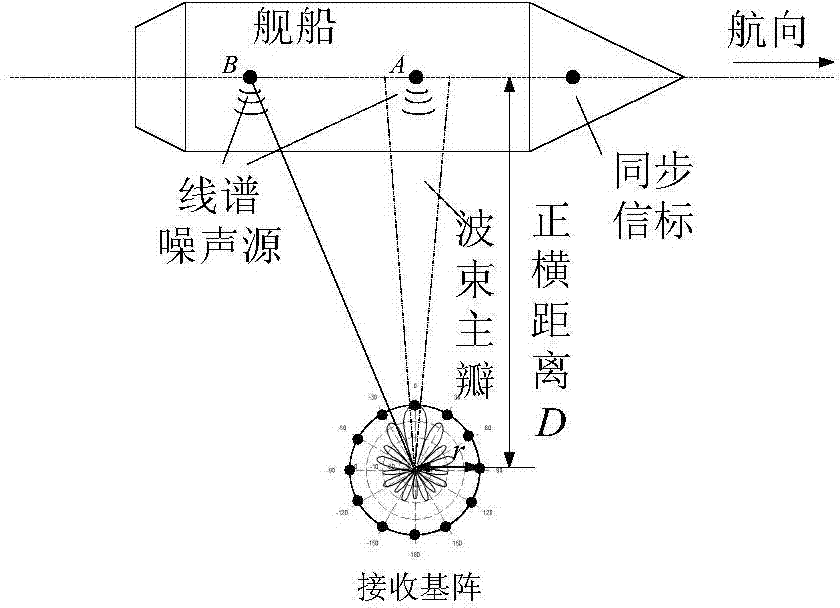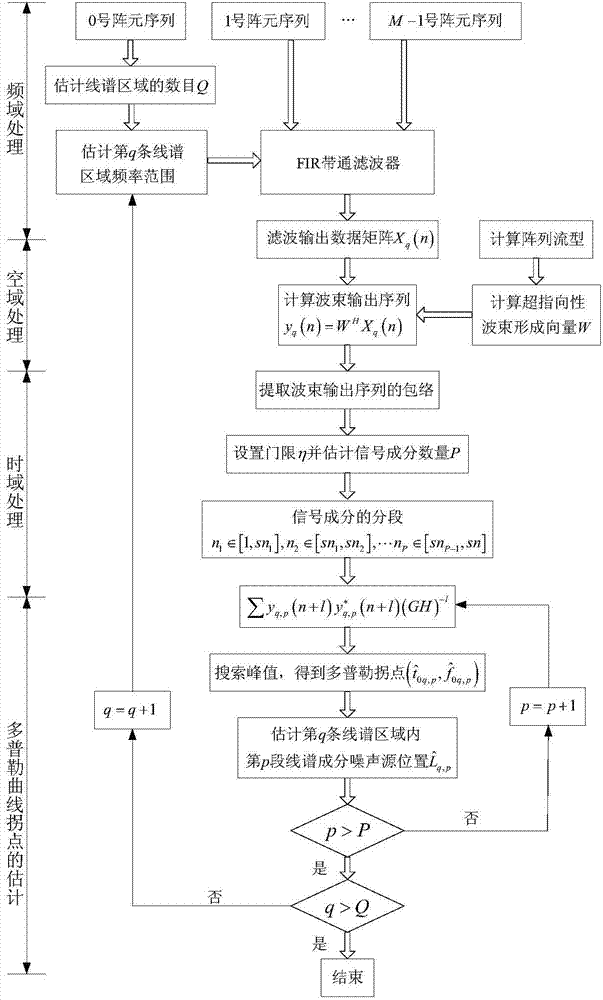Wave beam domain time-frequency analysis method for warship line spectrum noise source positioning
A line spectrum noise, time-frequency analysis technology, applied in positioning, radio wave measurement systems, measurement devices, etc., can solve problems such as inconvenience, strict restrictions on ship motion speed, and large receiving array size, etc. The effect of improving practical operability
- Summary
- Abstract
- Description
- Claims
- Application Information
AI Technical Summary
Problems solved by technology
Method used
Image
Examples
Embodiment Construction
[0027] The present invention will be further described below in conjunction with the accompanying drawings and embodiments.
[0028] The technical solution adopted by the present invention to solve its technical problems is:
[0029] Step 1: Use a uniform circular array with the number of array elements M and radius a as the receiving base array, and fix it in the water on one side of the ship under test in a typical way of laying out submarine buoys. The ship under test moves at a constant speed along a straight line. First approach the receiving matrix, and then move away from the receiving matrix. The distance between the receiving matrix and the track of the ship under test is D. A known hydroacoustic synchrolocator is located at a fixed position on the ship as a beacon source. position, the line spectrum noise source is distributed on the ship under test along the longitudinal direction of the ship under test;
[0030] Step 2: Receive the underwater acoustic signal of ea...
PUM
 Login to View More
Login to View More Abstract
Description
Claims
Application Information
 Login to View More
Login to View More - R&D
- Intellectual Property
- Life Sciences
- Materials
- Tech Scout
- Unparalleled Data Quality
- Higher Quality Content
- 60% Fewer Hallucinations
Browse by: Latest US Patents, China's latest patents, Technical Efficacy Thesaurus, Application Domain, Technology Topic, Popular Technical Reports.
© 2025 PatSnap. All rights reserved.Legal|Privacy policy|Modern Slavery Act Transparency Statement|Sitemap|About US| Contact US: help@patsnap.com



